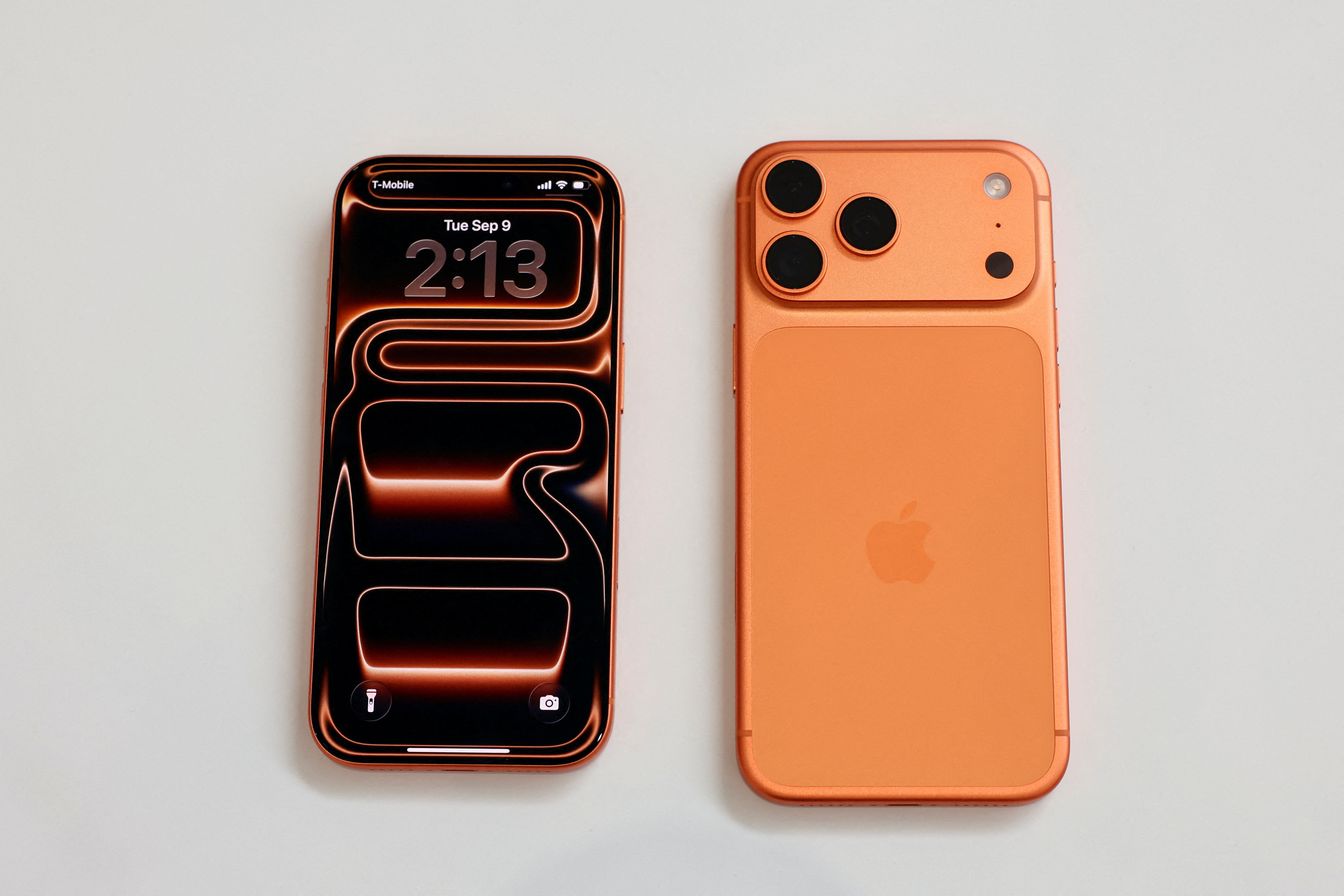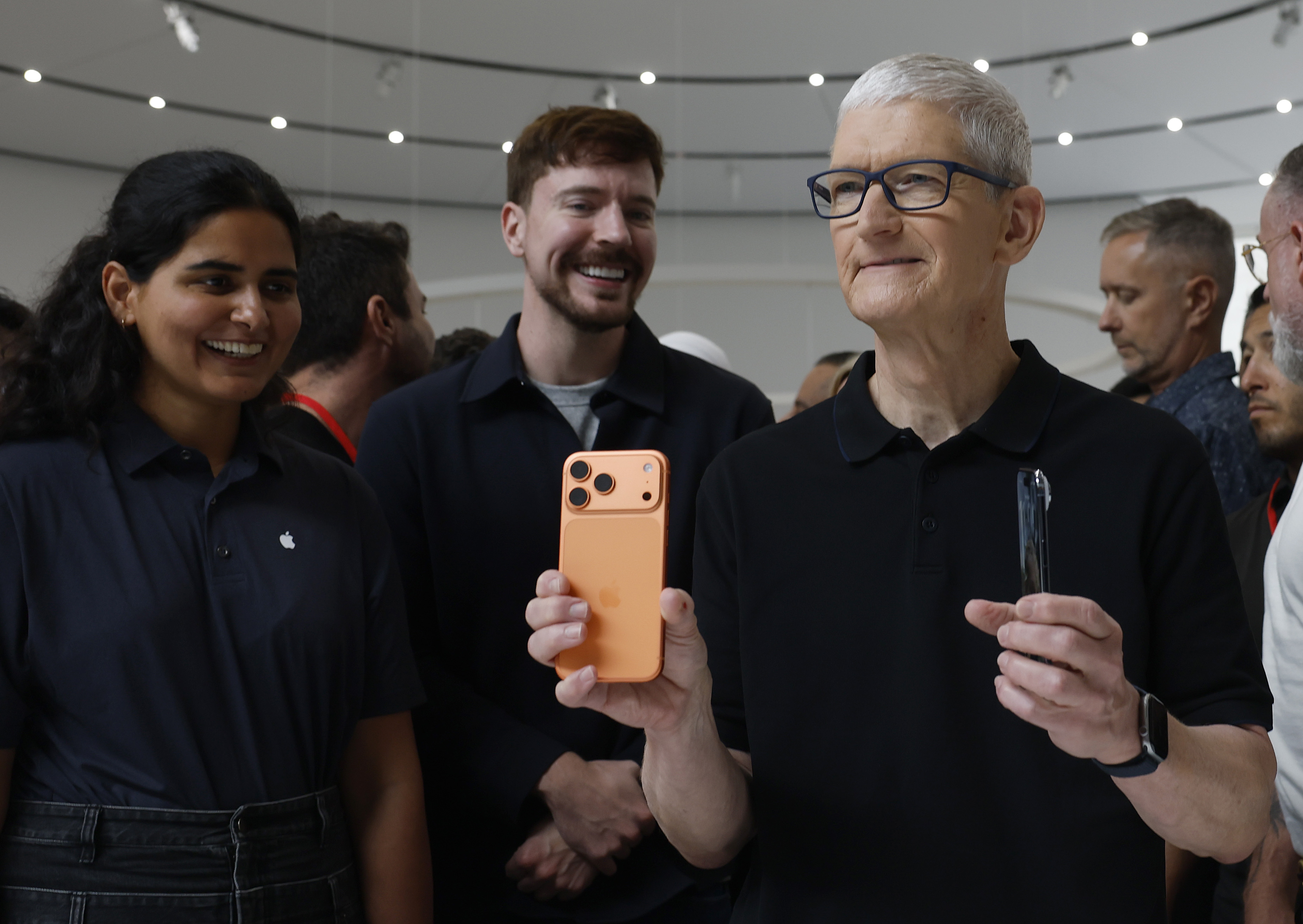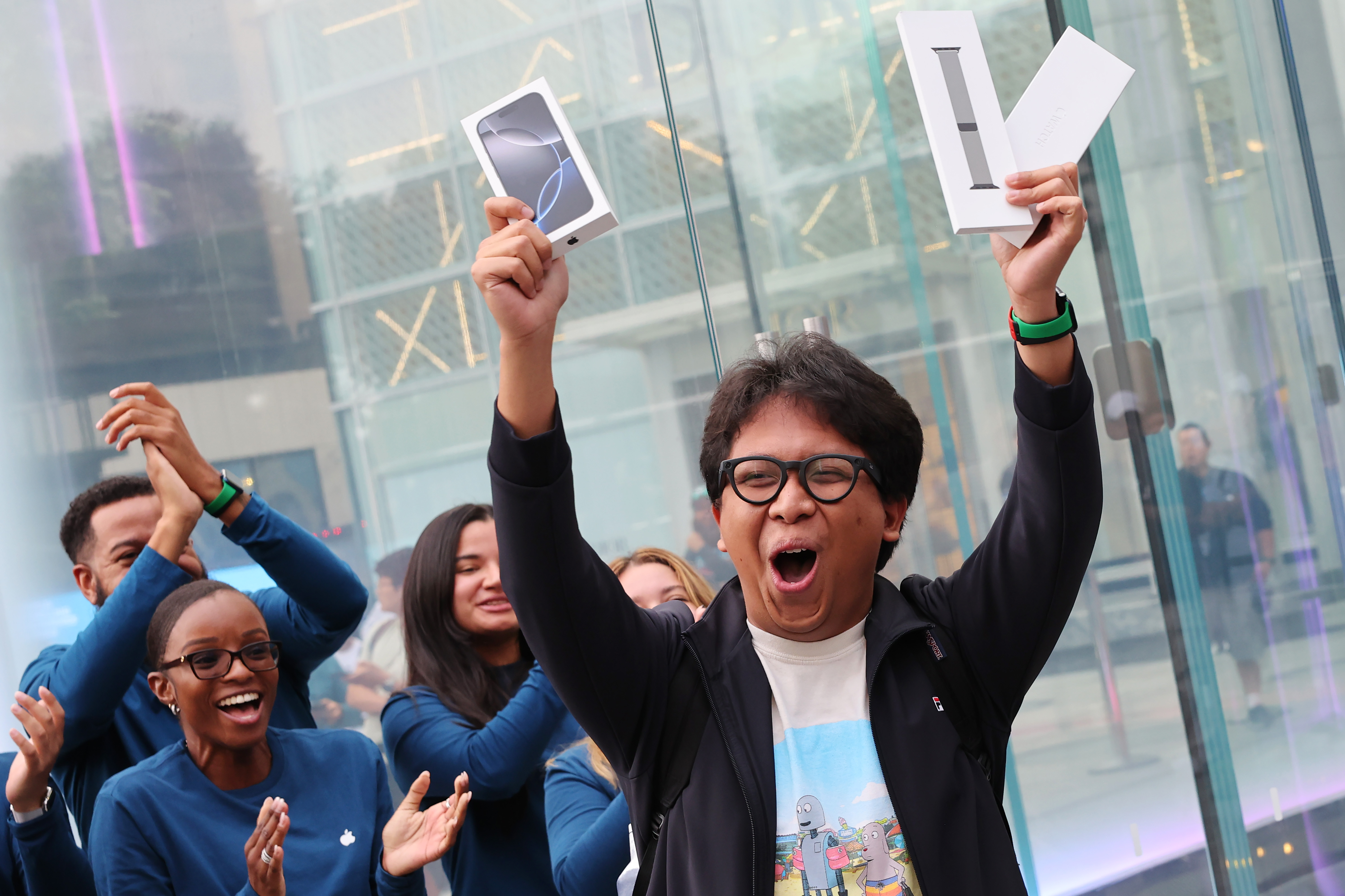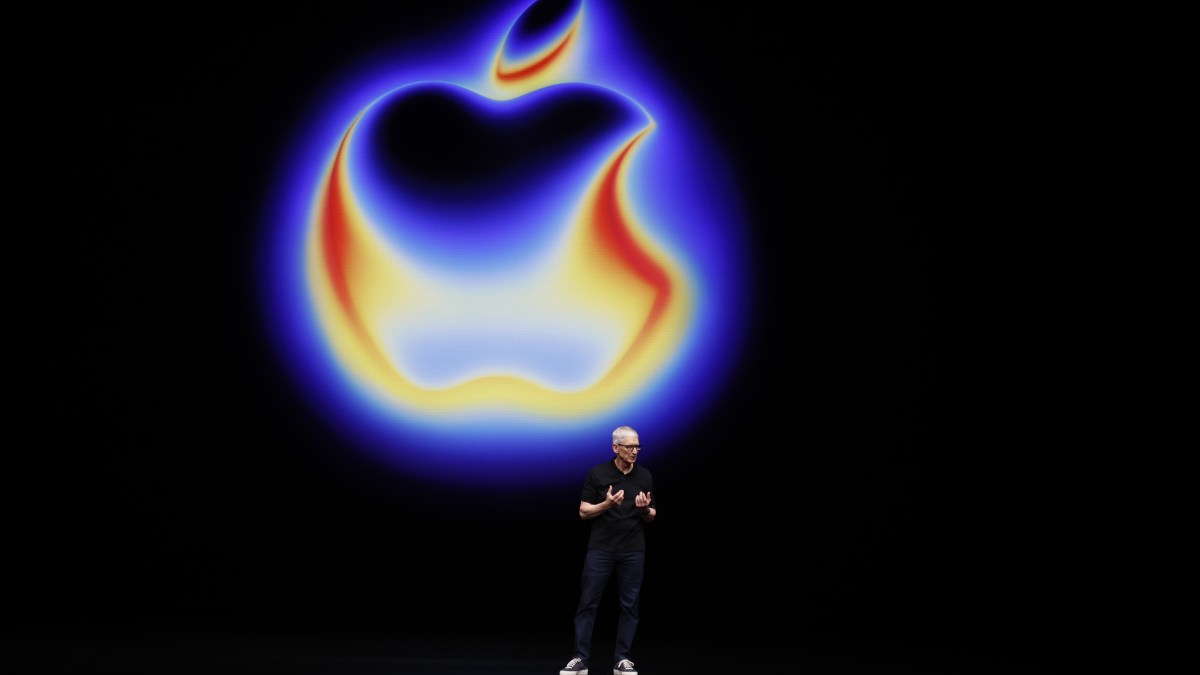Only a few years ago the release of a new Apple iPhone would make headline news across the world. The queues to be one of the first to own the latest version would rival the queue at Wimbledon for both length and fan dedication.
This week the release of the 17th iteration of the iPhone barely made ripples. The new series of phones, which vary in cost from a minimum of £799 rising to £1,999 for the Pro Max model with the most data storage, have been described by consumers as “the ugliest iPhone yet” and a “crime against design”.
Analysts and technology experts said the new phones were “just an evolution” of the previous model, rather than the introduction of “revolutionary change” seen at previous product launches.
• Boost from iPhone sales helps Apple drive ahead
It seems unlikely that long queues will form outside Apple stores when the new model will be available to take home later this month. In 2017 the BBC dispatched a reporter to survey the queue outside the flagship Regent’s Street shop for the release of the iPhone X. He found that hundreds of people had queued overnight and the excitement was replicated the world over.
“The world has changed,” Dan Ives, managing director and senior equity research analyst at Wedbush, said. “In the recent past people really felt like they needed the latest model smartphone. Now there’s not enough of a reason to upgrade, so people aren’t.”
Ives, who has been covering Apple and other technology companies for two decades, said: “Everyone on Wall Street used to stop to watch Apple’s annual September announcement of its new products [but now it’s] only background noise and people shrug their shoulders.”
With a lack of real hardware innovation to attract them, he said the average person in the West was upgrading their phone every four years, rather than every two years in 2019-20.

The iPhone 17 Pro, called “the ugliest iPhone yet”
MANUEL ORBEGOZO/REUTERS
He estimated that roughly 315 million of the 1.5 billion iPhone users worldwide had not upgraded their phones in more than fours years. It is a similar story for other smartphone manufacturers, including Samsung, Xiaomi and LG.
“There’s so much maturity in the industry, it’s hard to see where the growth will come from,” Ives said. Apple’s share price is roughly flat compared with this time last year at about $230.
Karen Egan, head of telecoms at Enders Analysis, said that in the past the only way to keep up with the rapid development in mobile technology was to buy a new phone. “But now new models are just an evolution of the previous one rather than introducing revolutionary change.”
She said that with better battery lives and software updates older phones can do many of the same things as the latest models and “people are happy to hold on to them for longer especially with the cost of living crisis continuing to bite”.

The release of Samsung’s Galaxy S24 in London was marked by a drone display
JOE MAHER/GETTY IMAGES FOR SAMSUNG
She agreed with Ives that the average replacement cycle in the UK had doubled since 2020 from just over two years to about four years. “People need to feel they are missing out on new features in order to get them to upgrade.”
A durable foldable phone, built-in AI efficiency or the introduction of 6G would be game-changing features that could convince people to upgrade, she said.
The lower end of the smartphone market was suffering the most as people who bought cheaper phones tended to keep them longer than people who forked out for the high-end models.
“At the very top, people are still upgrading,” Egan said. “They’re the people that are still on the contracts with a free upgrade every two years. They’re similar to the people who lease cars and get a refresh every few years.”
In the mid-market, she said, there had been a big jump in people prepared to buy secondhand or refurbished phones. “Refurbished phones make up 10 per cent of the market now, compared to 6 per cent before the pandemic,” she said. “These are people who will keep their phone until it doesn’t work any more and then see that they can buy a refurbished phone for much less than a new phone and it has similar features.
“They’re also much more environmentally friendly and that can be seen as cooler than blingy displays of wealth with the latest new phone.”

There was a distinct lack of pizzazz at the launch of the new iPhone
JUSTIN SULLIVAN/GETTY IMAGES
Francisco Jeronimo, the lead analyst for mobiles at IDC, said the new “impossibly thin” iPhone 17 Air was sufficiently exciting to “kick off an upgrade cycle”. “It’s true that there hasn’t been anything that disruptive for a while,” Jeronimo, who has just returned from Apple’s launch event at its headquarters in California, said. “But just changing the design is enough for many people to consider upgrading. For the last four years the new iPhones have looked similar, but the Air really is different.
“People always ask, ‘Do we really need thinner phones?’ The reality is we don’t, but when you feel it in your hands you change your mind. It’s the sort of device you want to show off to your friends in the coffee shop.”
• Which is the best child-friendly smartphone?
Ben Wood, chief analyst at CSS Insight, said innovation had slowed down and the excitement around new phones had evaporated. “Phone launches used to be like going to a rock concert,” he said. “There was huge anticipation and adulation as tech leaders unveiled their latest and greatest hardware, with wall-to-wall coverage in the media. These days it is much harder to move the needle.
“[Phones] have become more of a utilitarian object, with designs looking very similar year-to-year, while improvements in areas such as camera performance and screen quality start to plateau.”
Jan Lorbach, global strategic insights manager at the market research firm GfK, said people increased their spending on phones during the pandemic but have since massively cut back. “Smartphones were crucial then to communicate and people had money saved up to spend,” he said. “Now people are holding on to phones longer and pivoting to the refurb market when they need to buy one.”

The excitement of previous years was notable absent for the iPhone 17
MICHAEL M. SANTIAGO/GETTY IMAGES
He said 71 per cent of smartphone buyers in Western Europe waited three or more years before replacing their device in 2024, up 20 percentage points compared with 2019.
In France as many as one in seven smartphones sold are secondhand. The UK is close behind at almost one in ten, according to his research.
“We are living in a time of high prices, for food, for energy, for going out,” he said. “So people are seeking value for money and there’s more value for money in buying a slightly older phone than a brand new one.”
He said refurbished phones were particularly popular for families with children. “Take me for example: I have two boys, nine and twelve, and they both have refurbed phones because I know they are going to lose them anyway but I want them on the same brand of devices as the rest of the family.”
He said the refurbished phone market was growing much faster than the original handset market as “the refurb market didn’t really exist five years ago”.
Peter Windischhofer, chief executive of Refurbed, one of the largest players in the European second hand phone market, said buying a refurbished phone was “unbeatable value for money, and better for the environment”. A refurbished iPhone 16 Pro with a new battery is 30 per cent cheaper than a new iPhone 17 Pro “which has very few new features: tech innovation has slowed down”.
He said the “constant cycle of new releases” drives climate change and damages the planet.
“Every new device requires massive resources — water, rare materials, CO₂, energy, gold, cobalt, magnesium and more — while millions of old ones are discarded,” he said. “Climate change is the real cost of mindlessly buying new.”

